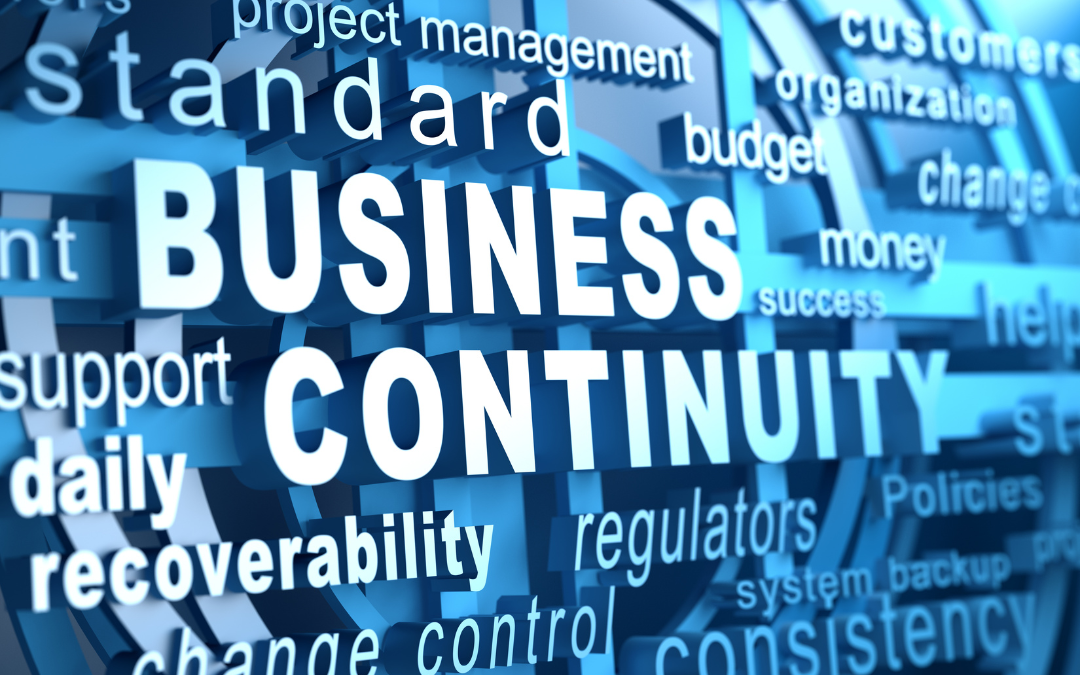
For SMEs, disaster recovery and business continuity are essential safeguards — the difference between surviving a disruption and losing clients. A few hours without access to critical systems can cost thousands in missed sales, stalled projects, and damaged trust. In an always-on economy, even brief outages can leave lasting scars.
And the causes aren’t limited to high-profile cyberattacks. Everyday risks like hardware failures, accidental deletions, or misconfigured systems can grind operations to a halt just as easily. Add in external factors like fire, flood, or power cuts, and it becomes clear: no SME is immune.
That’s why preparation matters. A clear, tested plan ensures outages are temporary setbacks rather than long-term crises — protecting revenue, client trust, and reputation when it matters most.
The real threats behind SME downtime
When it comes to downtime, the causes are varied — and often closer to home than many businesses realise. The most common threats include:
Malware and ransomware
Cybercriminals increasingly target SMEs because they assume security will be weaker than at large enterprises. A single ransomware attack can lock you out of your systems until a ransom is paid — and even then, there’s no guarantee of recovery.
Hardware failures
Servers crash, hard drives fail, and ageing laptops give out. (And, as Sod’s Law dictates, usually at the most inopportune moments…) Without a tested backup, vital files or applications can vanish overnight.
Human error
A misconfigured setting, an accidental deletion, or one click on a malicious link can be enough to trigger an outage. Even well-trained teams make mistakes, which is why process and safeguards matter as much as technology.
External factors
Floods, fires, or power cuts may be less common, but when they strike, they can cripple a business for days. SMEs without continuity plans often find themselves paralysed, with no clear route back to normal.
Recognising these risks is the first step. The next is building a recovery plan that minimises their impact and gets your business running again quickly.
The building blocks of a reliable recovery plan
A strong recovery and continuity plan doesn’t need to be overengineered, but it does need to be clear and practical. For SMEs, three areas form the foundation of resilience: backups, processes, and responsibilities.
Regular, tested backups
Backups are the safety net — but only if they work when called upon. Many SMEs make the mistake of setting up backups and never testing them, only to find that files are corrupted or incomplete when disaster strikes. A sound approach combines both cloud and local copies, giving flexibility if one option fails.
Just as important is running routine tests — quarterly at minimum — to confirm that data can be restored quickly and in full. At Operum Tech, we often help SMEs design backup strategies that are realistic for their size and budget, so they’re confident recovery will work when it matters most.
Documented recovery processes
When systems go down, panic and confusion waste valuable time. That’s why clear, step-by-step instructions should be written down, shared, and accessible to anyone who needs them. These processes should cover everything from how to trigger backups to who makes client notifications. A good recovery guide removes guesswork, so your team can act decisively instead of hesitating.
Defined responsibilities
Even the best plan falls apart if nobody knows who does what. Assigning roles in advance — whether it’s IT staff handling the technical fix, managers coordinating with clients, or administrators switching to manual workflows — prevents overlap and gaps in response. Clarity also builds confidence: staff are far more likely to stay calm under pressure when they understand their role in the recovery effort.
By addressing these three areas, SMEs reduce the chaos of an outage and create a roadmap for getting back online quickly. A plan doesn’t eliminate disruption, but it turns a potential business-stopping event into a controlled, manageable process.
Continuity planning that protects more than systems
True continuity planning looks beyond technology and considers the people and processes that keep the business moving. For SMEs in sectors like professional services, consultancy, or healthcare, client expectations don’t pause when systems go down — which makes communication and workarounds just as important as technical recovery.
Customer communication
Clients are more likely to forgive a temporary outage if they’re kept informed. Silence, on the other hand, erodes trust quickly. That’s why every continuity plan should include clear channels for updates — whether by email, SMS, or direct phone calls for high-value accounts. For firms in law, finance, or HR, this kind of transparency is also about safeguarding reputation: being proactive shows professionalism even in crisis.
Staff communication
Employees need clarity to stay effective under pressure. A well-prepared plan spells out how work should continue during an outage — for example, whether staff should log into cloud backups, switch to remote access, or temporarily pause sensitive tasks until systems are secure. Clear guidance reduces stress, avoids duplication of effort, and reassures teams that leadership is in control.
Alternative workflows
Continuity also means knowing how to keep serving clients without full access to core systems. A consultancy might shift to secure mobile devices to access client documents, while a healthcare clinic could fall back on paper-based intake forms until systems are restored. These workarounds aren’t ideal, but if mapped out in advance, they can keep business moving and protect client relationships while technical issues are resolved.
Continuity planning is about more than IT; it’s about ensuring your people, your clients, and your reputation are protected. By preparing communication strategies and alternative workflows alongside system recovery, SMEs can turn what might be a complete shutdown into a manageable disruption.
How SMEs can build resilience on a budget
Building a strong recovery and continuity plan doesn’t have to mean enterprise-level budgets. Many cost-effective solutions are within reach for SMEs:
- Cloud-based backup solutions
Services like Backblaze, Acronis, or Microsoft OneDrive for Business provide secure, subscription-based backups without the need for expensive on-premise hardware. They make it simple to store data offsite and retrieve it quickly when needed. - Simple testing routines
A recovery plan is only as good as its last test. Even small businesses can schedule quarterly or bi-annual test runs to make sure backups restore properly and staff know their roles. - Outsourced monitoring and management
Working with a managed IT provider gives SMEs access to enterprise-grade monitoring and proactive support without the cost of hiring a full-time IT team. Issues can often be identified and fixed before they cause disruption, making prevention as cost-effective as recovery. At Operum Tech, we provide this kind of proactive monitoring for SMEs, helping clients spot vulnerabilities early and avoid costly downtime.
Small, proactive steps like these can turn disaster recovery from a daunting project into routine good practice. For SMEs, the right mix of affordable tools and external support is often the fastest route to peace of mind.
With a plan vs. without: the cost of being unprepared
Imagine two SMEs facing the same problem: a critical server fails late on a Friday afternoon.
Without a plan
The business scrambles to piece together the latest versions of client files. Staff can’t access case notes, deadlines slip, and client communications stall. By Monday, projects are delayed, frustrated clients are chasing updates, and trust in the firm has taken a serious knock.
With a plan
Backups are activated immediately, recovery steps are followed, and staff switch to alternative workflows — using cloud copies of documents or pre-agreed manual processes. Within hours, client-facing work is back on track, and updates are sent out to reassure key accounts. The disruption is visible only internally, and clients see a company that handled the crisis with professionalism.
Two businesses, same problem — but one suffers lasting reputational damage while the other turns a major outage into a minor hiccup. At Operum Tech, we’ve seen both sides of this story, which is why we help SMEs put tested continuity plans in place before disaster strikes.
The bottom line: downtime is preventable
For SMEs, disaster recovery and business continuity planning is what separates a minor disruption from a major crisis. Downtime is more than an inconvenience — it’s a direct hit to revenue, reputation, and client trust.
At Operum Tech, we specialise in building tailored recovery and continuity strategies that scale with your business. From cloud backups and proactive monitoring to communication plans that keep clients reassured, we make sure you’re ready for the unexpected.
If you want peace of mind knowing your business can withstand disruptions — big or small — get in touch with Operum Tech today.
Sign up below to join the Operum newsletter



